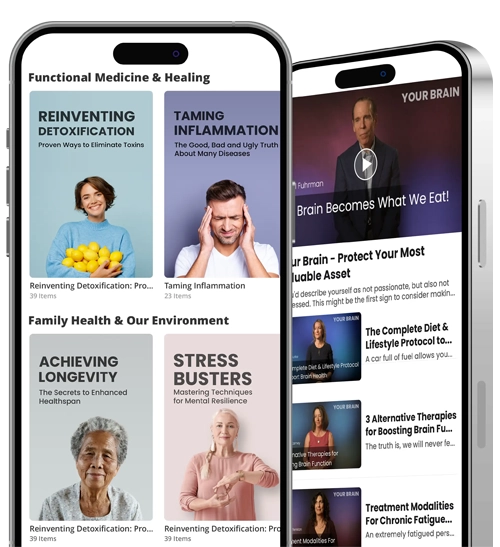A New Study: The Link Between Fiber and Abdominal Obesity
Home
 Blog
Blog
 Health
Health
 Organs & Systems
Organs & Systems
 Digestive System
Digestive System
 A New Study: The Link Between Fiber and Abdominal Obesity
A New Study: The Link Between Fiber and Abdominal Obesity

Not Getting Enough Fiber? Your Waistline May Show It…
Ready for some pretty terrifying numbers?
- 600 million, the number of obese adults in the world
- 1.9 billion, the number of overweight adults in the world.
- 200%, the amount worldwide obesity has increased since 1980.
- $147 billion, the annual medical cost of obesity in the U.S.
(Statistics courtesy of WHO and CDC)
Numbers that big can be pretty hard to wrap your head around, but it’s scary to realize that the world is becoming fatter and fatter.
What could be causing this drastic increase in weight? The primary factors behind obesity include:
- Refined and artificial food, including “hyperpalatable” junk food
- Aggressive marketing by food manufacturers
- Food addictions
- High sugar intake, which leads to higher insulin resistance
- Inactive lifestyle
- Imbalanced food intake, nutrient deficiencies
Look closely, and you’ll notice that most of those things have one common factor: the food you eat.
Food is the primary factor that affects obesity rates. Simply put, eating healthy decreases your chance of gaining weight, while poor eating habits will raise your obesity risk. Pretty straightforward, right?
According to a new study, there’s one food that is having a huge influence on obesity and weight gain. More accurately, a LACK of this one food…
Get FREE Access!
We are on a mission to change your life by providing you with curated science-backed health tips, nutrition advice and mouth-watering recipes. Sign up to receive your 3 starter gifts and get exclusive access to new weekly content for FREE:

Free eBook
to boost metabolism

4 Shopping Guides
for every diet

22 Free Recipes
to beat sugar addiction
 Subscribe now
Subscribe now
The Link Between Insufficient Fiber Intake and Obesity
A Spanish study examined the effects of fiber intake on body weight and abdominal obesity among adults. More than 1650 adults between the ages of 18 and 64 were involved in the study. The researchers analyzed their “Anthropometric data, macronutrients and micronutrients intake, practice of physical activity, socioeconomic data and lifestyles”. Special attention was paid to their fiber intake, as measured using a 3-day diet record.
The study found that the average adult consumed less fiber than was recommended by both the Institute of Medicine of the United States and the European Food Safety Authority. Even for those who consumed fiber, grains served as their primary source of fiber, followed by pulses, fruits, and veggies.
Among those who consumed the highest quantities of fiber were most likely to have normal body weight, while those who consumed the least amount of fiber had a higher chance of obesity and high body weight/fat. Worse, their higher body fat was accumulated primarily around their abdomen—the type of fat that leads to metabolic disease and cardiovascular disease.
The researchers summed up their findings by saying, “The present study demonstrates an insufficient fiber intake…and confirms its association with excess body weight and abdominal obesity.”
As you can see, they made it clear: insufficient fiber is linked to high body weight and a greater obesity risk. It’s definitely in your best interest to add more fiber to your diet in order to reduce weight and fat!
Best Sources of Fiber
If you’re trying to get more fiber, here are the foods you should be eating a lot more of:
Lentils – Lentils contain 15.6 grams of soluble and insoluble fiber per cup, and they’re loaded with fat-burning, muscle-building amino acids.
Black Beans – Black beans contain 15 grams of fiber in every cooked cup, along with complex carbohydrates for energy and protein to build muscles.
Artichokes – Artichokes contain 10.3 grams of fiber per medium vegetable, making it the fiber king of veggies!
Raspberries – Raspberries contain 8 grams of fiber per cup of berries, plus a whole lot of Vitamin C, antioxidants, and fat-burning ketones. Plus, they’re absolutely delicious!
Blackberries – Blackberries contain 7.6 grams of fiber per cup, with a hefty dose of antioxidants and flavonoids (which give them their dark color and rich flavor).
Bran Flakes – Bran flakes contain 7 grams of fiber per cup, and offer both soluble and insoluble fiber.
Broccoli – Broccoli contains 5.1 grams per cup of cooked veggies, along with plenty of calcium, iron, Vitamin C, and polyphenols.
Brussels Sprouts – Brussels sprouts contain 4.1 grams of fiber per cup, along with fat-burning sulfur compounds.
Oatmeal – Oatmeal contains 4 grams of fiber per cup of cooked oats, plus a hefty dose of complex carbs, fatty acids, and proteins.
These foods are all excellent sources of dietary fiber—both soluble (absorbs toxins, sugars, and fats) and insoluble (scrubs out your intestines). You’ll find that adding more of them to your diet will help to combat obesity by increasing your fiber intake. A small change to your eating habits, but one that could have HUGE benefits in the long run!
To learn other nutrition recommendations and science-backed advice from our doctors and health experts, join ZONIA video streaming platform for free today.

We created ZONIA because we believe that everyone deserves to be empowered with the education and tools to be healthy and happy. Zonia's original videos and personalized transformation programs by our health & wellness experts will help you achieve this mission. Click on the button below to get started today:






